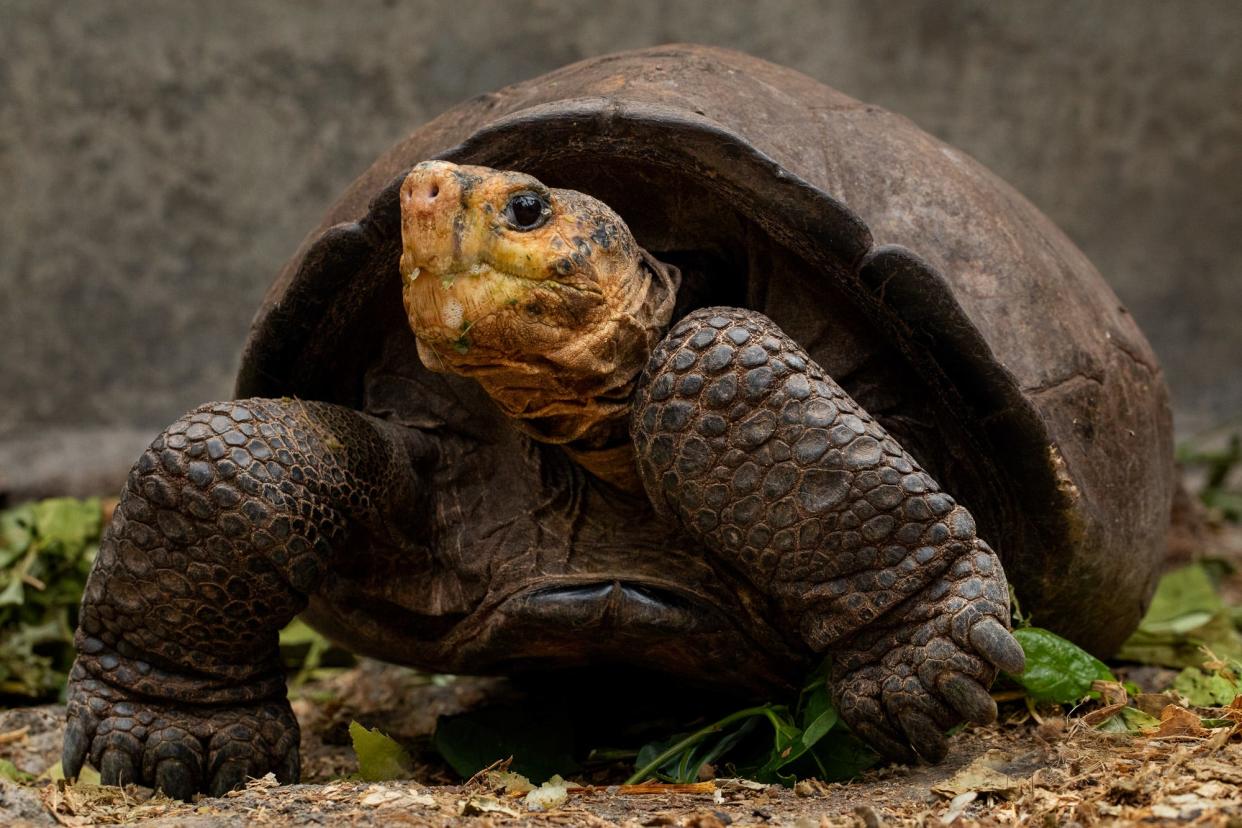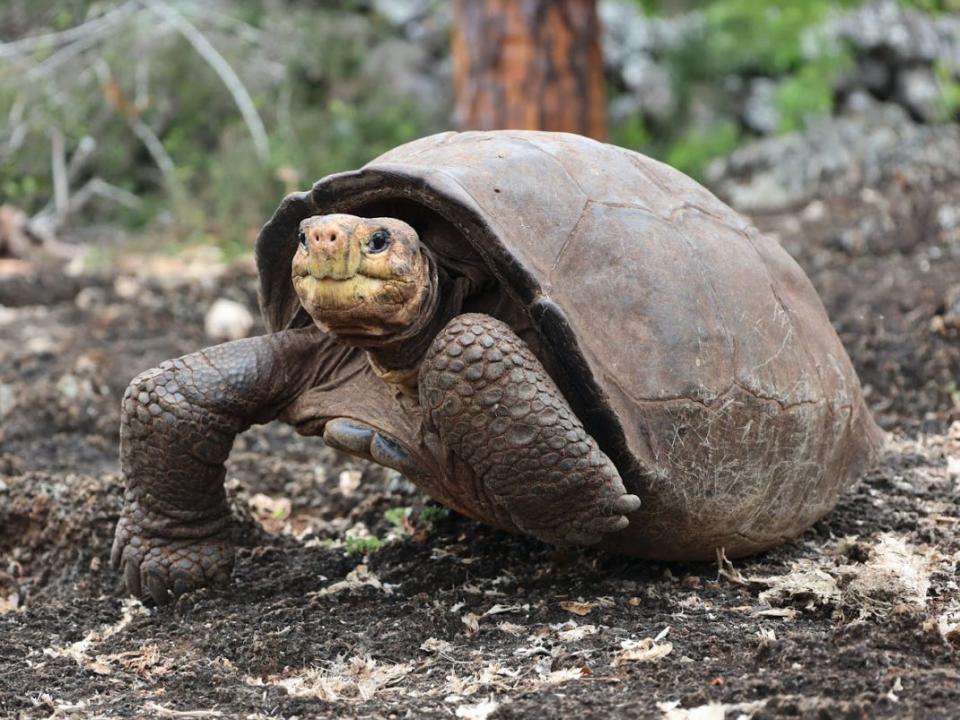Galapagos 'fantastic giant tortoise' was believed to be extinct for 100 years — until the discovery of a lone 50-year-old female nicknamed Fernanda

For a century, biologists have been intrigued by a species of Galápagos tortoise thought extinct.
But a tortoise recently discovered on a volcanic island belonged to that species, a new paper says.
DNA analysis showed the newly found tortoise came from the same lineage as one found in 1906.
A single giant female tortoise was discovered in 2019 on Fernandina Island, an active volcano in the Galápagos Islands that's considered by some to be the largest pristine island on earth.
Scientists have confirmed the tortoise, nicknamed Fernanda, belongs to a species thought extinct for over a century, according to a paper published this week in the journal Communications Biology.
"The significance of the find is huge," Evelyn Jensen, a lecturer in molecular ecology at Newcastle University, told Insider.
Jensen was the co-first author of the paper along with Stephen Gaughran, a postdoctoral research fellow in ecology and evolutionary biology at Princeton University.
"To find that a species of Galápagos tortoise that was thought to be extinct for over 100 years is not in fact extinct, but lives on, was truly amazing," Jensen said.
The first specimen of Chelonoidis phantasticus, also called "the fantastic giant tortoise," was discovered on Fernandina Island in 1906 and collected by explorer Rollo Beck. The specimen differed from other Galápagos tortoises due to the shape of its shell, which flared out along the edge, and prominent "saddlebacking," or a raised, saddle-like shape, towards the front.
But another "fantastic giant tortoise" was never found, with the species long considered extinct — that is, until Fernanda.
Fernanda, who researchers believe is at least 50 years old, was discovered in 2019 on an isolated patch of vegetation that was cut off from the main vegetated area of the island by lava flows. Her growth was stunted, which the researchers said could explain why her physical traits weren't quite as pronounced as the specimen found in 1906.

Fernanda was collected and placed in captivity at the Galápagos National Park Tortoise Center. Researchers sequenced the genomes of both Fernanda and the 1906 specimen, which was part of the California Academy of Sciences collection.
Their analysis indicated the two tortoises were genetically distinct from other species of Galápagos tortoises and are from the same lineage.
"That Fernanda was found at all was a huge surprise," Jensen said. "We really did not expect that there were any tortoises living on Fernandina Island, although there were rumors of signs of tortoises there over the decades."
Once she was found, researchers thought Fernanda may have been native to a different Galápagos island and somehow ended up on Fernandina. While tortoises don't swim, they can float or be transported during storms.
Though another "fantastic giant tortoise" has not been found since Fernanda, there have been encouraging signs, like tracks and feces, suggesting 2 to 3 other tortoises may be on the island.
There are believed to be 15 species of Galápagos tortoises, according to the nonprofit Galápagos Conservancy. The Galápagos Archipelago is well known for its distinct species, which were studied by Charles Darwin and helped contribute to his theory on evolution.
"This also shows the importance of using museum collections to understand the past," Adalgisa Caccone, the senior author of the study and a lecturer in ecology and evolutionary biology at Yale University, said in a statement.
"The finding of one alive specimen gives hope and also opens up new questions as many mysteries still remain," Caccone said, posing questions about whether there are more tortoises on Fernandina Island, whether they can be recovered through a breeding program, and how they got there in the first place.
Read the original article on Business Insider

